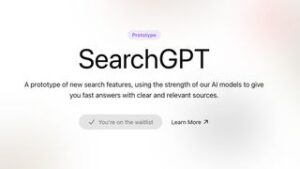/cdn.vox-cdn.com/uploads/chorus_asset/file/24900216/_2_imageSend.png)
Beginning today, Patreon creators who want a dedicated space to interact with fans will have a built-in option: group chats.
Content creators who share their work via Patreon will be able to set up and host chat rooms for their fans to interact with each other, the company announced today. Creators can have up to four chats going at once and can restrict access to chats based on subscriber tiers — for example, having a thread open only to paying members. Chats will be available on mobile to start, with a desktop version in the works.
Community chats will be familiar to many Patreon creators and subscribers: the feature is essentially a simpler, in-app Discord server. Creators will be able to customize chat names and topics, and users can share photos, text, and emoji reactions. Access to a subscriber-only Discord server is already a common perk for paying fans; Patreon even offers a Discord integration to streamline the process.
Chats are a way for creators to build a sustainable community around their work and for fans to more directly connect, Sam Haveson, product lead at Patreon, told The Verge. Creators with early access have used chats to interact with fans and use that feedback for future content, Haveson says.
Community chats isn’t meant to replace Discord — Patreon will continue to support the integration and let creators choose which tool they’d like to use, if any.
“We want creators to have agency, control over their memberships,” Jack Conte, co-founder and CEO of Patreon, says. “I think a lot of creators and fan communities will still use [Discord], and I think there’s going to be contingent of folks that want an in-the-box solution and something that’s just native right inside the Patreon app.”
This approach is something Patreon has slowly been pivoting toward. Patreon creators often publish work to other platforms like YouTube, Twitch, Discord, and elsewhere and use Patreon to deliver their work — including other premium content — to fans. But relying on third-party apps has its downfalls, as Patreon found out last year.
Last March, Patreon video creators who were using a Vimeo integration to share paywalled content were hit with steep fee increases without warning and risked losing their past content if they didn’t pay Vimeo. The video hosting platform eventually apologized to creators and tweaked its policies — and some months later, Patreon rolled out its own video hosting option that had been in the works.
“If there’s a core experience, like exclusive content, or community that is happening outside of Patreon, it works great for a lot of creators. But then if that company for whatever reason makes changes, it becomes very hard for our creators, and it affects their membership,” Conte says. Patreon’s solution is to bake more of those features into its own platform. Early signals suggest many creators like having a native option: Conte says 60 percent of video creators have used Patreon video.
The native chat function also comes with a set of moderation tools for creators that work in addition to the default content moderation on the platform. Patreon’s existing community guidelines still apply, but creators will be able to clamp down on any additional behavior they don’t want in chats and take action against violative users. Haveson says in the future, creators will be able to enlist community members to assist with moderation.
How fans’ profiles appear on Patreon is also getting an update. Subscribers will now be able to add a profile picture, name, and bio and link their social media accounts.
Patreon maintains it’s not trying to compete with algorithmic and ad-driven platforms like Instagram, TikTok, or Twitter, which also let creators make money through subscriptions and exclusive content. Still, the company has introduced a steady stream of new features, including free membership tiers and the ability to sell digital products. All of these new products, Patreon says, are aimed at addressing problems within the creator economy — volatile or opaque recommendation algorithms, a lack of control over their business, and difficulty actually reaching their audience.
“We’ve learned, through early testing, these are group chats that are igniting friendships,” Haveson says. “To me, that’s quite special. That’s something that probably can’t happen in the comment section on TikTok. That’s what we’re trying to chase here.”





